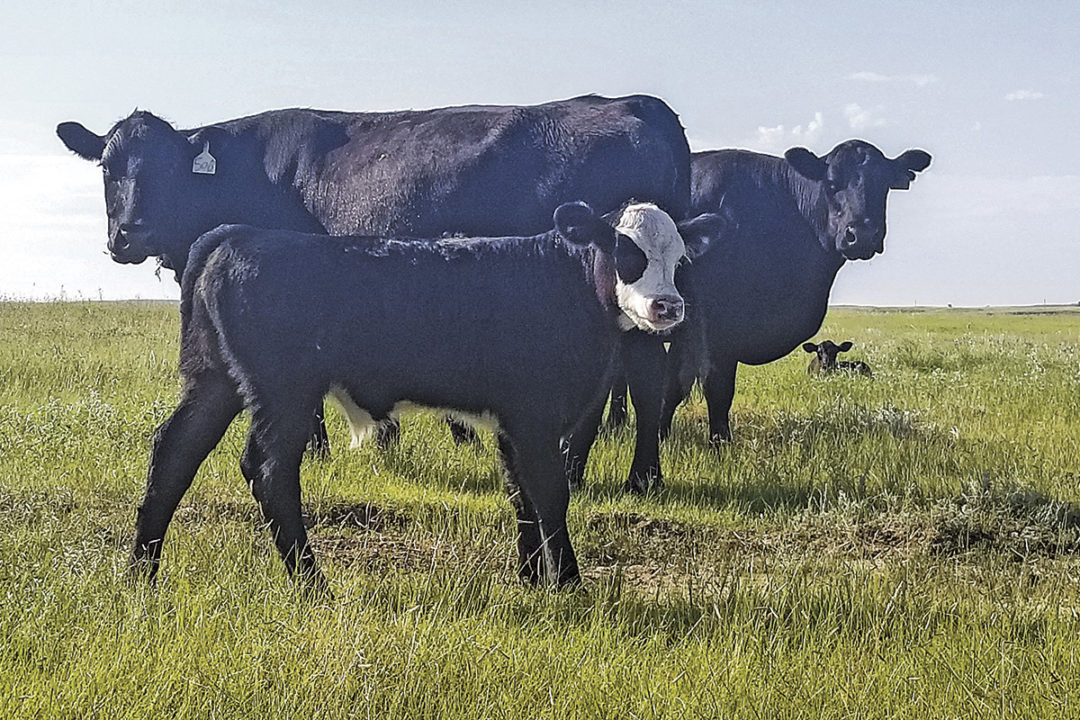A properly balanced mineral program is important for optimum immune function, calf health and growth, milk production, and reproductive performance of beef cattle. However, it is often assumed that grazing livestock can meet mineral requirements through forage alone during the grazing season. It is important to recognize that the mineral content of forages is highly variable, and mineral imbalances can occur during the grazing season, potentially reducing overall animal performance and profitability.
Minerals are typically referred to as macro- or micro- (trace) minerals. Macrominerals are required at a larger amount of the diet (more than 1 gram per day) and are generally measured as a percentage contained in the supplement. This category includes minerals such as calcium, phosphorus, magnesium, potassium and sodium. Macrominerals are not stored well in the body and therefore require a more consistent supply from the diet.
Microminerals (often referred to as trace minerals) are still required but in very small amounts (less than 1 gram per day), so they are typically expressed as parts per million (ppm) of the supplement. Only small amounts of microminerals pass through milk to nursing calves, making calves reliant on the stores they have in their liver at birth until they begin to ingest forage and supplements as they grow. Calf liver stores at birth largely depend on liver concentrations in the dam. Trace minerals include copper, zinc, iodine and manganese.
 Supplementing minerals at the right time and in the right amount can
have a positive impact on livestock health and profitability. Photo by Janna Block.
Supplementing minerals at the right time and in the right amount can
have a positive impact on livestock health and profitability. Photo by Janna Block.
Providing adequate mineral to meet requirements of beef cattle during the grazing season can be a challenge. Forages are typically deficient in one or more minerals, even during peak growing season. Most naturally occurring mineral deficiencies are associated with specific regions and are directly related to soil characteristics. For example, molybdenum and selenium concentrations in forage increase as soil pH increases from acid to neutral or alkaline conditions. Zinc and copper may decrease slightly with increasing pH.
Growth stage of forage is also a consideration. As plants mature, mineral content declines due to the natural dilution processes and translocation of nutrients to the root system. In grazing livestock, phosphorus has been described as the most prevalent mineral deficiency throughout the world. This is largely due to phosphorus-deficient soils, drought and increased forage maturity.
To further complicate the issue, there is wide variation in the amount of mineral that is actually absorbed within the animal and utilized for production purposes. This is known as bioavailability, and it is influenced by factors such as distribution of mineral in the plant, chemical form of the mineral and mineral interactions that occur in the body. Other factors that can influence mineral content and bioavailability include species, precipitation and fertilization strategies.
Forage testing is the foundation for establishing the need for and the amount of supplemental minerals. Soil testing can help explain forage composition, but it is not reliable in directly evaluating the mineral status of the animal. Likewise, blood testing and liver analyses can add information on a herd’s mineral status. However, knowledge of estimated dietary mineral intake from both feed and water provides the basis for correcting deficiencies or adjusting for mineral excesses.
Adele Harty, a cow-calf field specialist with South Dakota State University Extension, says she has received numerous questions from producers over the years due to the complexities of mineral supplementation. As a result, she worked with colleagues to develop an educational program for beef producers focusing on mineral nutrition that was first offered in 2017. I worked with Harty to expand the program to North Dakota in 2018. In 2021, Megan Van Emon with Montana State University Extension and Shelby Rosasco with the University of Wyoming Extension also joined the team and offered the program to producers in their states. The core components of the program include online workshops to increase producer knowledge of mineral supplementation, forage sampling, monitoring and evaluating mineral consumption throughout the grazing season, and conducting individual ranch visits to address specific questions and concerns.
A summary of forage mineral analysis results was developed based on approximately 135 forage samples collected by participants during the growing seasons from 2017 through 2020 in North and South Dakota. Results showed that only 3% of samples contained adequate copper (at least 10 ppm). Around 20% of the samples contained enough zinc to meet requirements (30 ppm). Almost all the samples would provide adequate calcium for lactating cows (recommended levels of 0.28% to 0.58%); however, only 15% of the samples would meet phosphorus requirements (recommended levels of 0.22% to 0.39%).
In addition to mineral deficiencies, forages can contain excess levels of certain minerals that may reduce the availability of other minerals to the animal when present in high amounts. These minerals are known as antagonists and typically include minerals such as iron, sulfur and molybdenum. Iron levels greater than 250 ppm, the level at which iron can interfere with copper availability, were found in 40% of the samples submitted through the mineral program. Ten percent of the samples contained potentially toxic levels of iron (greater than 500 ppm). Molybdenum was found at levels greater than 2 ppm in 60% of the samples.
Although this was not an extensive data set, the results indicate several mineral deficiencies and antagonists that could impact livestock production and performance during the breeding season and throughout the production cycle. Diagnosing the mineral status of a herd requires a thorough evaluation of animal performance, feed and water analysis, and possibly blood and/or liver analysis. Supplementing minerals to meet requirements can have a positive impact on livestock health, production and profitability.












